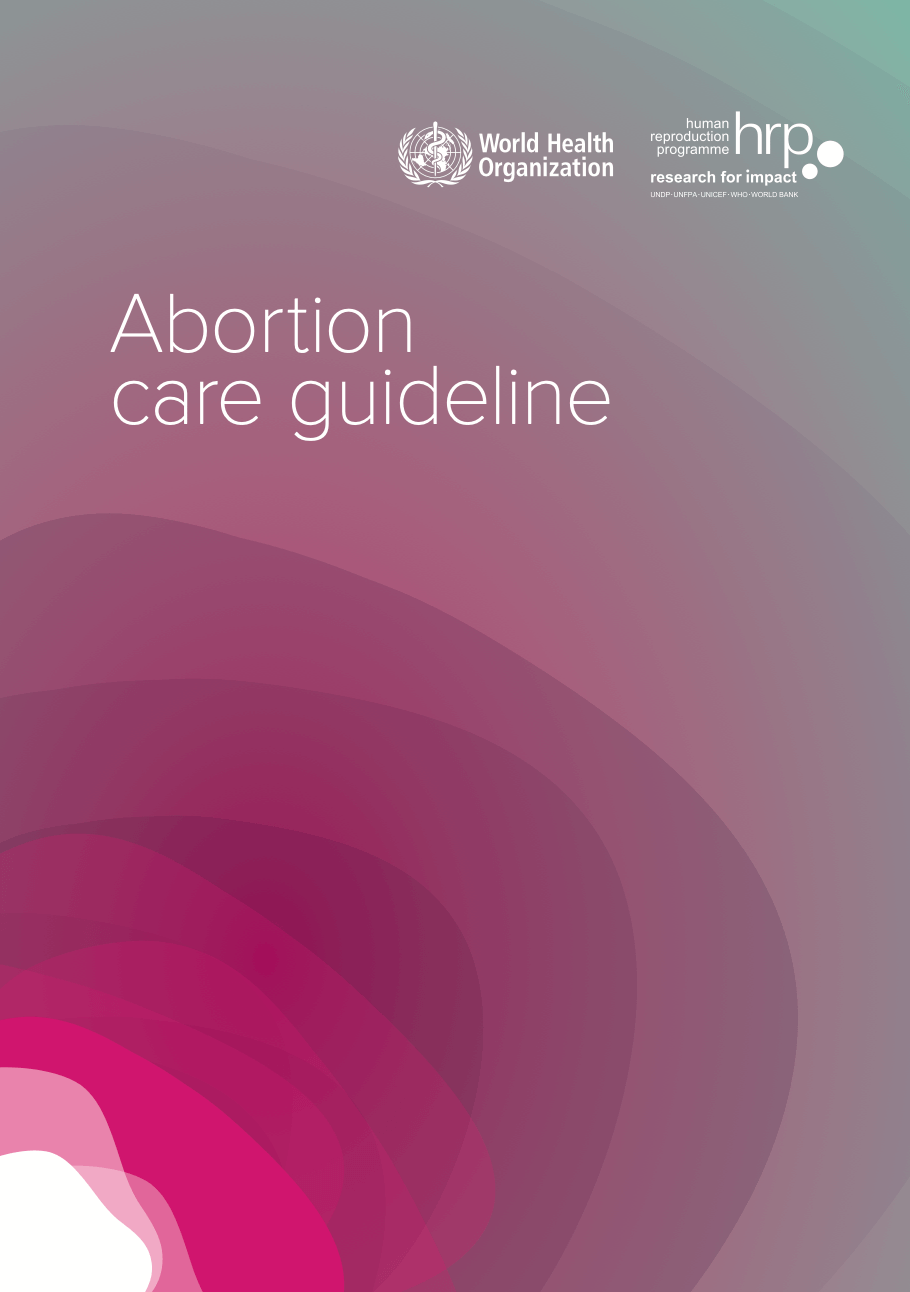WHO Abortion Care Guideline

World Health Organization Abortion Care Guideline
Read more about World Health Organization Abortion Care Guideline Download (4.6 MB)
The World Health Organization published a new, comprehensive guideline on 8 March 2022. The objective of this guideline is to present the complete set of all WHO recommendations and best practice statements relating to abortion.
While legal, regulatory, policy and service-delivery contexts may vary from country to country, the recommendations and best practices described in this document aim to enable evidence-based decision-making with respect to quality abortion care.
Abortion Methods
The World Health Organization (WHO) recommends three methods of safe abortion: medical abortion (MA), manual vacuum aspiration (MVA) / vacuum aspiration (VA), and dilatation and evacuation (D&E).
Medical abortion (MA)
Medical abortion is the use of mifepristone and misoprostol pills, or misoprostol pills alone, to induce an abortion. This method can be used up to 24 weeks of pregnancy, but different doses and regimens apply, depending on the duration of pregnancy.
Some of the advantages of medical abortion are that it avoids a surgical procedure. It is like having a spontaneous miscarriage, the pills are used by the woman and the abortion can safely take place at home through 10 weeks of pregnancy. After that, it is safer to use this method in a clinical setting, especially in the second trimester of pregnancy.
The disadvantage of medical abortion is that it takes from several hours to several days for the abortion to be complete. Most of the bleeding with medical abortion is within the first 1-2 days, but it may continue for some days or even a couple weeks after that. The misoprostol causes cramping as it makes the uterus contract, and it can also cause nausea and vomiting.
The combination of mifepristone + misoprostol in the right doses causes a complete abortion in 96-98% of cases. Mifepristone is only available in about 60 countries, however, misoprostol is available in almost all countries because it has other medical uses in addition to abortion. Misoprostol alone is not as effective as the combination of mifepristone + misoprostol, so women may need to take a repeat dose several times to achieve a complete abortion. Most women seem to know when the abortion is complete, or within a few days that they are still pregnant.
Vacuum aspiration (VA)
Vacuum aspiration (VA) involves evacuation of the contents of the uterus, either manually by the use of a hand-held plastic aspirator (MVA) or with an electric vacuum pump (EVA). This can also be done with an electric vacuum pump (EVA). This method has a success rate of 95-100% up to 14 weeks of pregnancy. Depending on the duration of pregnancy, abortion with vacuum aspiration takes from 3 to 10 minutes to complete, and can be performed at primary level on an outpatient basis using a local anaesthetic. Most women feel well enough to go home after 30 minutes.
The advantage of vacuum aspiration abortion (a simple surgical method) is that it only takes a few minutes. In addition, most of the blood, fluids and tissue, that must come out naturally with medical abortion, are collected with an aspirator during vacuum aspiration.
Dilatation and evacuation (D&E)
Dilatation and evacuation (D&E) requires a skilled, experienced provider. It is used in the second trimester usually after 14 weeks of pregnancy. A D&E procedure can usually be performed on an outpatient basis. General anaesthetic is not required and can increase risk. A D&E procedure usually takes no more than 30 minutes to perform.
Notes
1) Both medical abortion and vacuum aspiration cause cramping and pain, which can be controlled with simple painkillers, taken in advance of starting the procedure. Non-steroidal inflammatory drugs such as ibuprofen are recommended. Medication for nausea with medical abortion can also be taken.
Medical abortion and vacuum aspiration can be provided at the primary health care level, by a wide range of non-specialist providers.
It is always best to have the support of a health care provider for abortion where possible. However, women in legally restricted settings are using abortion pills on their own. Although serious complications are rare, they do happen e.g. incomplete abortion, infection or very heavy bleeding, and women may need access to medical help.
If you are uncertain or concerned in any stage in this process, seek help.
2) A surgical procedure called dilatation and curettage (D&C) is still widely used for first and second trimester abortions in a large number of global South countries. This method has not been recommended by the WHO for more than a decade because medical abortion and aspiration abortion are both far safer.



